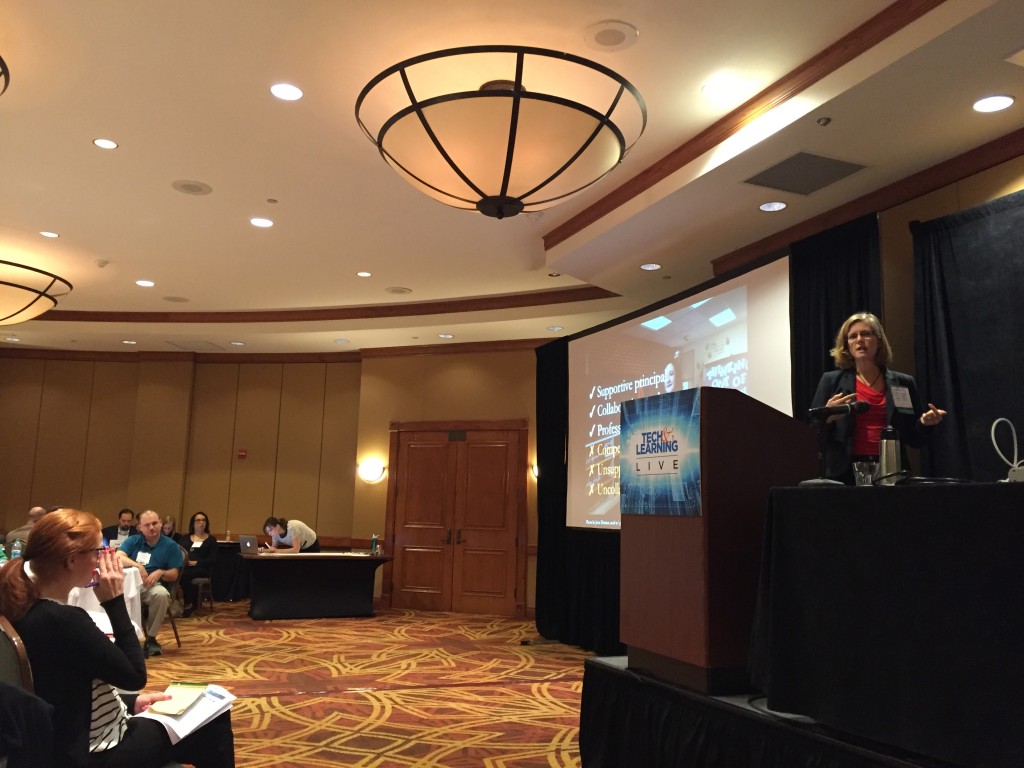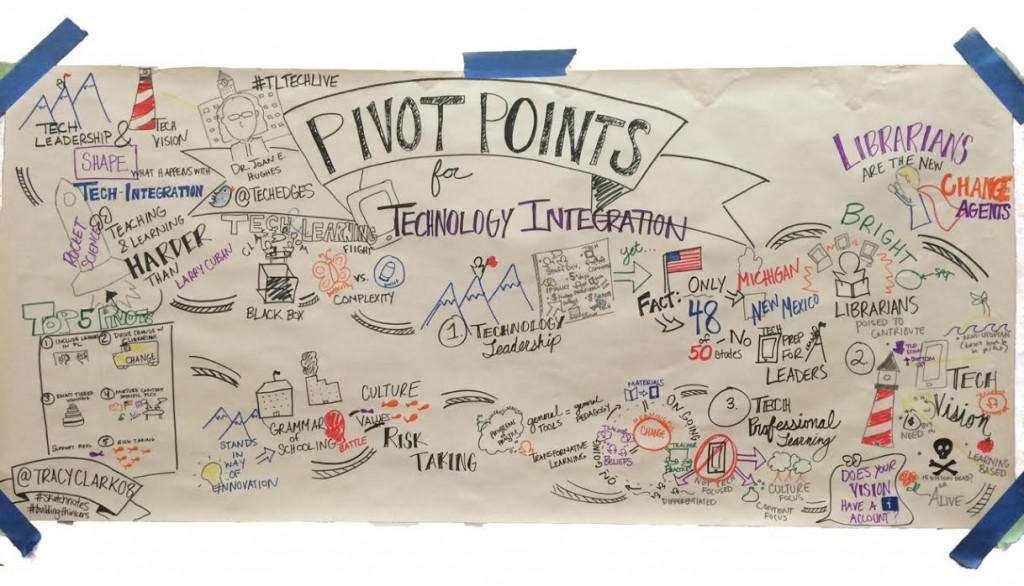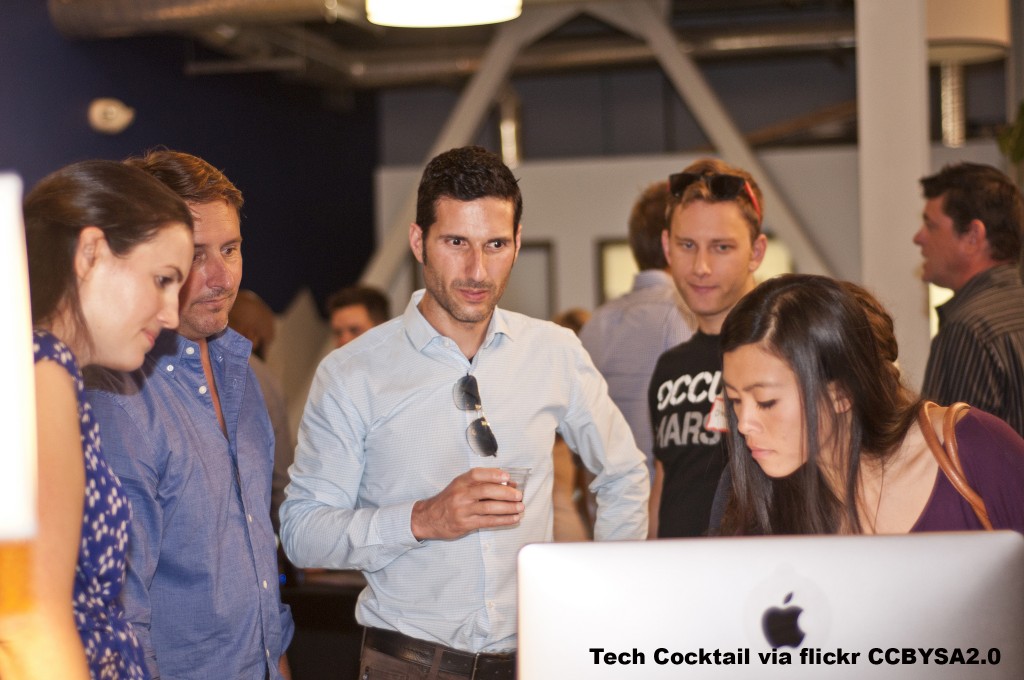SXSWedu Summit – Seeking EdTech Startups to join #SlowPitchEdu
Slow Pitch: An EdTech Design ThinkTank
I am delighted to announce that details and plans for our SXSWedu 2016 Summit are nearly complete! Our very last detail is to find 5 amazingly interesting edtech startups who would like to work towards developing/revising/rethinking a product that can transform teaching and learning in PK-12 subject areas and be successful penetrating the PK-12 market.
You can find all the details at my super specific website: http://slowpitchedu.com
Or, you can just launch into the application right now.
5 Pivot Points for Technology Integration
 Yesterday, I keynoted the Tech & Learning Live Austin event. The day was spent considering professional learning and technology integration. In my morning keynote, I shared classroom and school-based research insights on technology integration. Specifically, I talked about how technology leadership, technology vision, and professional learning shape successful technology integration efforts in K-12 schools. The talented Tracy Clark @tracyclark08 sketched the content, which is also included below.
Yesterday, I keynoted the Tech & Learning Live Austin event. The day was spent considering professional learning and technology integration. In my morning keynote, I shared classroom and school-based research insights on technology integration. Specifically, I talked about how technology leadership, technology vision, and professional learning shape successful technology integration efforts in K-12 schools. The talented Tracy Clark @tracyclark08 sketched the content, which is also included below.
I ended the keynote with 5 research-based actions schools can do to pivot towards successful technology integration. They include:
#1: If school leaders must tend to their own technology learning*, we should be inviting them to the professional learning opportunities we arrange in schools and districts. And leaders – you should go! I’ve created opportunities for leaders to engage with actual technology-supported lessons for K-12 learning, and they loved this so much. *Research shows that only 2/50 states require technology preparation course for school leadership degrees, and examination of school leadership curricula reveals 92% of 137 programs do not mention technological courses or preparation. Of the 7%, the technology relates to data-driven decision making, not teaching and learning with technology.
#2: Librarians are the new technology integration change agent*! Use this to your advantage. Hire and cultivate technology-interested librarians and encourage their contributions to your leadership team. *Research shows that librarians contribute to technology leadership activities because of their knowledge of pedagogy, curriculum, technology, and collaboration. Enablers of librarians to do this work include (a) supportive principal, (b) collaborative teachers, and (c) engagement with professional organizations. A disabler is a competitive instructional technologies.
#3: While an optimal technology vision has had input from constituents, not everyone participates in that process*. To increase awareness and buy-in for your technology vision, enact tiered visioning through small groups or PLCs, grade level teams, subject area teams) who develop their own mini technology vision. Think of these mini-visions as a wedding cake – the largest cake bases are built from these small group mini-visions and support and relate to the overarching school or district vision (the top tier). This can enable top-down and bottom-up visioning and enactment at the classroom level. *Research shows more success with technology integration if the technology vision is learner-focused, curricular-focused, and pre-planned in collaboration with stakeholders, such as leaders, technology directors, librarians, teachers, parents, and students. They can emerge from top-down or bottom-up processes as long as the visions are communicated widely and garner buy-in among stakeholders.
#4: Nurture content-specific, ongoing professional learning, such as in professional learning communities (PLCs) that examine problems of practice (POPs)*. If these PLCs have created mini visions (see Pivot #3 above), it’s a logical next step to work on enactment (with support). *To have meaningful, transformative technology integration, research shows the materials (e.g., technologies) must change but that is not sufficient. You must also change teacher beliefs and teacher practices.
#5: If we are asking teachers to change their practices and beliefs, then we must support real risk-taking by working towards cultural change*. *Changing our beliefs and practices will challenge the “grammar of schooling,” which is a school’s engrained educational format and goals. Thus, the kind of change you are working towards will necessitate changes in school culture. School leaders who are successful in technology integration create value and appreciation and support for risk-taking, exploration, and innovation.
This presentation is licensed under a Creative Commons Attribution-NonCommercial-ShareAlike 4.0 International License. Please feel free to share with others, with attribution.
The content of what I spoke about is in the NOTES of the presentation.
 Sketch by Tracy Clark
Sketch by Tracy Clark
Unsung Heroes Grant Program for Innovative Teachers ($2K – 25K awards!)
ING sponsors an Unsung Heroes, a grant program for K-12 educators “utilizing new teaching methods and techniques that improve learning.” Their 2011 program is accepting applications now. 100 educators will earn $2,000 towards their projects and a few special teachers may win much more. The deadline is April 30, 2011.
Their awards to teachers in 2010 involve examples of interdisciplinary projects (merging topics across disciplinary domains like literacy and math), hands-on / project-based pedagogy in which the students are getting their hands dirty with applying concepts, such as growing gardens, building robots, working with seniors or those younger to teach and learn, and a lot of service learning projects in which their outcomes has value for the community in which the students live.
I also looked across the 2010 winners for examples of uses of technology being incorporated into the projects. Teachers are using graphing calculators, emulator software, interactive boards, and digital projects to help students explore fundamental algebraic functions; using digital audio capture to create audio snapshots of storytelling to be later written into text-based stories (by 1st graders); use of virtual fields trips to broaden students’ conceptions of culture and tolerance; creating video public service announcements on healthy living topics; several projects involved robotics and machines; more use of video and audio to document history and legacy of one’s community with multimedia products published on a wiki.
A special congratulations to our Texan educators who won awards. All the projects involved technology in some way. Michelle Yates (Coder Elementary) in Forth Worth is instigating project-based learning through pre-created tubs that allow students to explore themes. “Students will integrate technology, story telling, visual presentations and communications skills in a non-competitive fashion in an effort to create a relevant project that can be integrated into their family and community.” Kellye Parker (San Antonio School for Inquiry & Creativity) has created a project that is really valuable as she teams her 8th grade students with elders in the community in which the students help the elders learn about texting, digital photography, video film, basic computer skills and user-friendly software. There’s a lot of room for growth in this area of partnership. Finally, Betty Johnson, Astra Zeno and Dr. Anil Kumar of Clifton Middle School (Houston) incorporate video documentaries into their students’ exploration of ecosystems with special emphasis on solar energy science.

